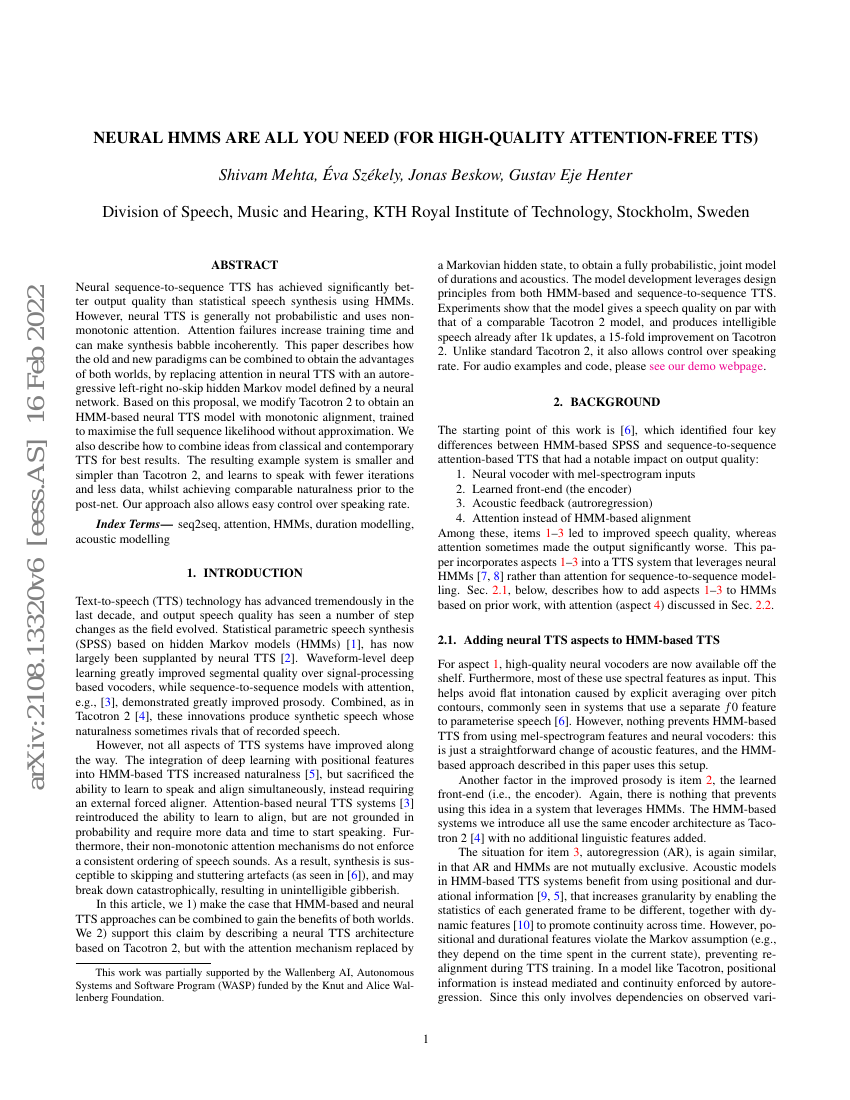Command Palette
Search for a command to run...
Shivam Mehta Éva Székely Jonas Beskow Gustav Eje Henter

Abstract
Neural sequence-to-sequence TTS has achieved significantly better output quality than statistical speech synthesis using HMMs. However, neural TTS is generally not probabilistic and uses non-monotonic attention. Attention failures increase training time and can make synthesis babble incoherently. This paper describes how the old and new paradigms can be combined to obtain the advantages of both worlds, by replacing attention in neural TTS with an autoregressive left-right no-skip hidden Markov model defined by a neural network. Based on this proposal, we modify Tacotron 2 to obtain an HMM-based neural TTS model with monotonic alignment, trained to maximise the full sequence likelihood without approximation. We also describe how to combine ideas from classical and contemporary TTS for best results. The resulting example system is smaller and simpler than Tacotron 2, and learns to speak with fewer iterations and less data, whilst achieving comparable naturalness prior to the post-net. Our approach also allows easy control over speaking rate.
Code Repositories
Benchmarks
| Benchmark | Methodology | Metrics |
|---|---|---|
| speech-synthesis-on-ljspeech | Neural HMM Ablation with 1 state per phone | Mean Opinion Score: 2.68 |
| speech-synthesis-on-ljspeech | Neural HMM | Mean Opinion Score: 3.24 |
Build AI with AI
From idea to launch — accelerate your AI development with free AI co-coding, out-of-the-box environment and best price of GPUs.